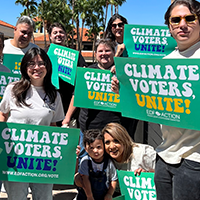What is “prebunking” and how to do it to help advance EVs
One of the best approaches to combating misinformation is to warn people about it before they see it. This is called “prebunking” or “inoculation.”
Unfortunately, it’s not as simple as just saying, “heads up, you’re going to see some misinformation today…” You have to give examples, while also answering the question, “why would someone lie about that?”
Let’s walk through an example using electric vehicles (EVs).
First, choose which lie to prebunk: Not all misinformation narratives are created equal. Some take hold and cause more harm than others. So first, choose the narrative that will be most impactful to dispel. You can do that by searching trusted resources like the Poynter Institute’s Politifact. (Find more trusted sources here.)
Understand your audience: By audience, I mean the people in your social networks, both on and offline. Are you friends with many scientists? If so, it might take a more nuanced lie to fool your community. Is your cousin falling into a QAnon rabbit hole? Then maybe start with the most basic, obvious lies.
For example, here’s a piece of misinformation about EVs that I’ve seen self-described environmentalists fall for: “Manufacturing an Electric Vehicle produces more emissions than a gas-powered car so they aren’t really that clean”
It works because there’s an element of truth in it. But it’s extremely misleading because it leaves out all the ways EVs surpass gas-powered vehicles. So here’s how to combat this disinformation narrative.
Create the truth sandwich: Are you hungry yet? Here comes the truth sandwich. Lead with the facts, introduce the fallacy and the logic (why lie about this?), then end with another fact.
- Fact: Driving electric is cleaner than the most efficient gas-powered car AND they will only get cleaner as our electric grid gets cleaner.
- The misinformation: Of course, there are emissions from building every vehicle. Due to battery manufacturing, GHG emissions from building EVs are slightly higher than those from manufacturing a gasoline vehicle.
- The logic: Those who want to keep the status quo rather than transition to a clean energy future conveniently leave out this fact.
- Another fact: Those increased emissions are quickly offset by zero tailpipe emissions during operation.
Now go on, play with your food and give this new technique a spin. And tell me how it goes!



